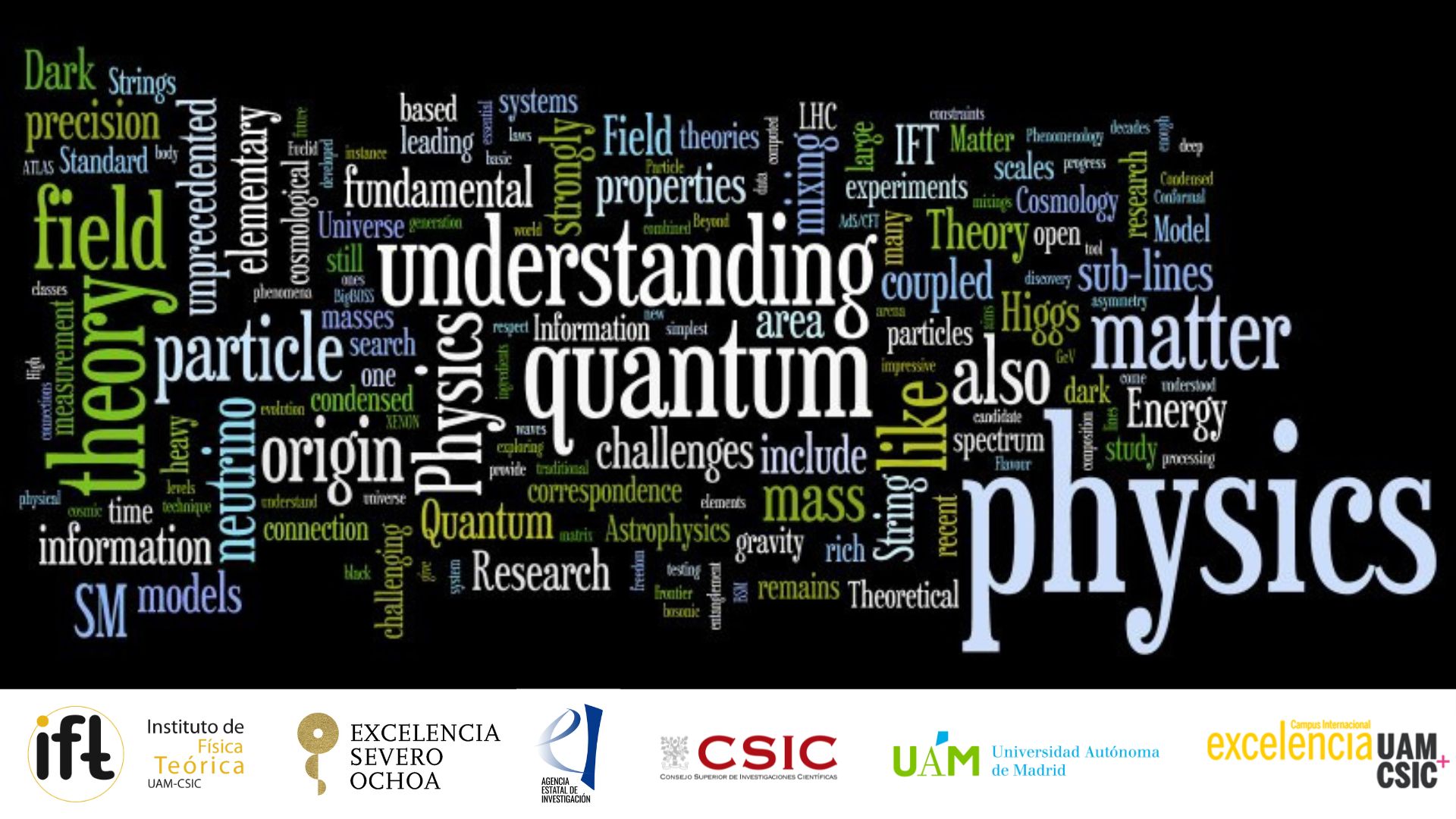Centro de Excelencia Severo Ochoa
Menú
Buscar

IFT Seminar Room/Red Room
Strong gravitational evidence at galactic, extragalactic and cosmological scales exists to believe that most of the matter in our Universe, i.e. up to ∼85% of the total, is dark and non-baryonic. Yet, this dark matter (DM) has not been directly detected. Some of the most preferred scenarios suggest that DM consists of Weakly Interacting Massive Particles (WIMPs), which interact mostly gravitationally with baryonic matter. There are three complementary techniques to hunt for these WIMPs: production in colliders, direct detection via scattering of Standard Model nuclei, and indirect detection of DM annihilation/decay products. Since all evidence we currently have on DM is astrophysical, indirect searches are the only ones that can provide a means not only to identify the necessary connection between the astrophysical observations and what DM is made of, but also to help unravel the precise DM distribution in the Universe.
This thesis focuses on shedding light on the nature and distribution of DM in different ways, paying particular attention to the so-called DM halo substructure or subhalos. More precisely, the two big main objectives of this PhD thesis are i) the characterization of the DM subhalo population inside a variety of host halos using data from state-of-the-art numerical cosmological simulations; and ii) the analysis of the sensitivity of the future Cherenkov Telescope Array (CTA) to gamma rays from DM annihilation in the TeV energy regime. The results of the thesis help to understand not only the DM clustering at small scales but also the role of subhalos for current and future indirect DM searches.
Social media